
surfresearch.com.au
mid-pacific magazine : motion pictures, hawaii, 1912
mid-pacific magazine : motion pictures, hawaii, 1912
| home | catalogue | history | references | appendix |
 |
surfresearch.com.au
mid-pacific magazine : motion pictures, hawaii, 1912 |
|
Riding the Surfboard at
Waikiki Beach, Honolulu, Territory of
Hawaii.
|
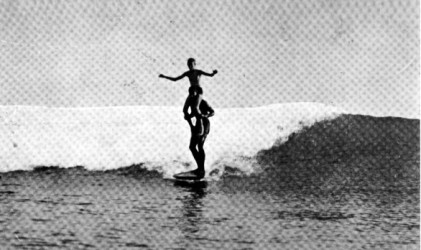 |
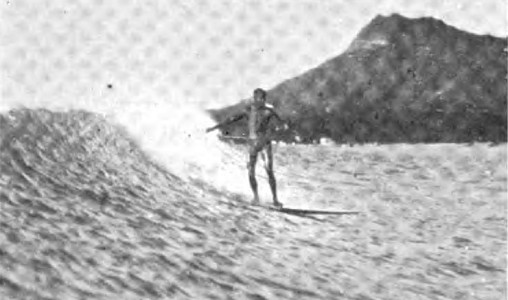

Page 279 the novice how the wave was caught and mastered. The Outrigger Club was all ablaze with excitement. For two years its hundreds of members, especially the Juniors, had been striving to learn the tricks of surfriding, and many were eminently successful. Surfriding became a white man's sport in Hawaii, and not a few young women and girls learned to master the surfboard. A great steel tripod was built for the representative of Pathe Freres, and this was carried far out on the reef into deep water. Here it was erected and a platform built just above the highest waves, and on this platform M. Bouvillain erected his motion picture camera. Here he caught the waves as they formed and the men and boys as they watched over their shoulders the oncoming roller, ready to paddle forward as the down-slope of the advancing roller began to lift their boards. This was not all, however; the Pathe man began from the beginning; he made motion pictures of the riders approaching the surfboards on dry land, pictures of them launching their boards and paddling out to the big waves half a mile out at sea. Every movement of the arms and legs was depicted—from start to finish; no motion could escape the rapid fire of the films; so that today as French may be learned from the phonograph record, so the swimmer may study the secrets of surfboard riding from the motion picture films. |
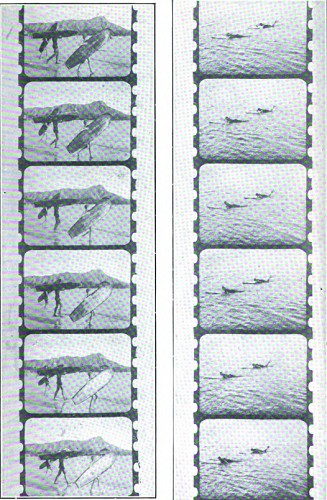 The Start Out.
Making
Ready.
|
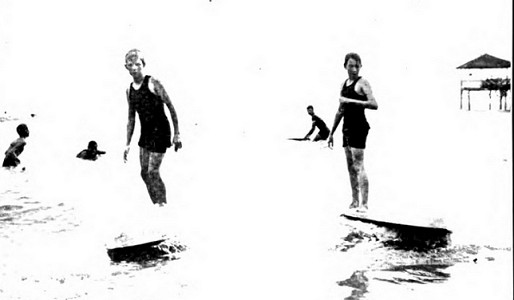
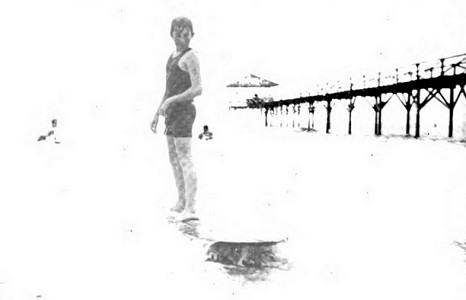
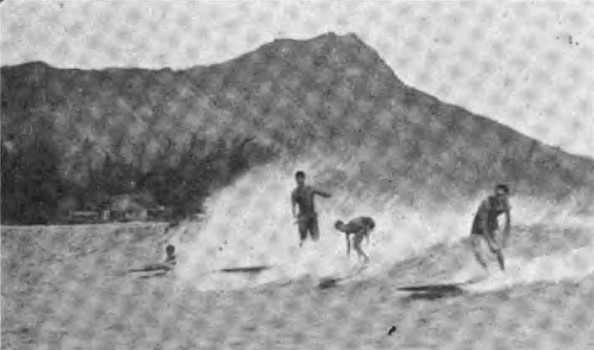
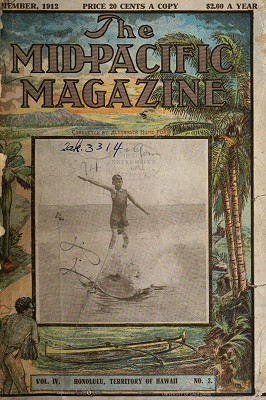
|
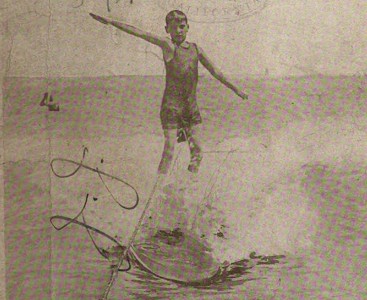 The Mid-Pacific Magazine Published by Alexander Hume Ford, Honolulu, Territory of Hawaii, Volume 4, Number 3, September,1912 |

| home | catalogue | history | references | appendix |